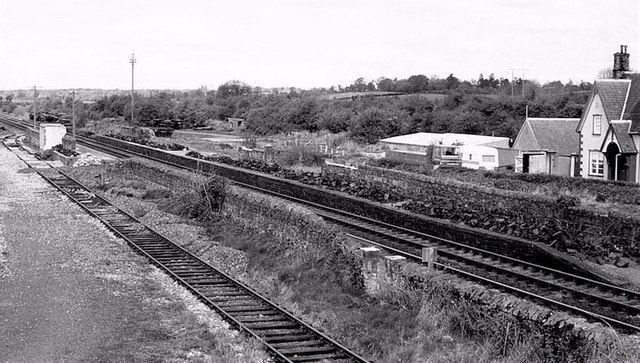 | ||
Dublin and the Belfast Junction Railway (D&BJct) was an Irish gauge (5 ft 3 in (1,600 mm)) railway in Ireland. The company was incorporated in 1845 and opened its line in stages between 1849 and 1853.
On 6 January 1852 Portadown became a junction, when the northern section of the D&BJct was opened between Portadown and Mullaghglass about 1.5 miles (2.4 km) beyond Goraghwood. Bridging of valley near Bessbrook by construction of Craigmore Viaduct delayed the running of through trains to just north of Drogheda until 1852. The Boyne Viaduct at Drogheda was not built until 1854–55, at a cost of £124,000, to the design of Sir John Macneill, who was the consulting engineer for the D&BJct.
The D&BJct line from Drogheda to Portadown connected the Ulster Railway's Armagh – Portadown – Belfast Great Victoria Street original line with the Dublin and Drogheda Railway's Dublin Amiens Street – Drogheda line, forming the main line between Dublin and Belfast.
In 1875 the D&BJct merged with the D&B, forming the Northern Railway of Ireland.
